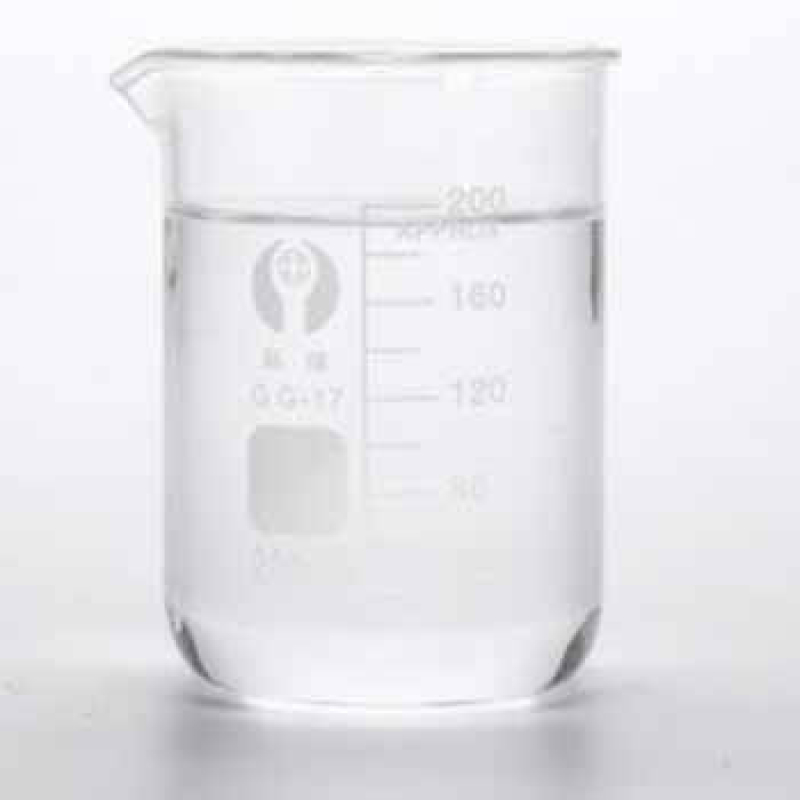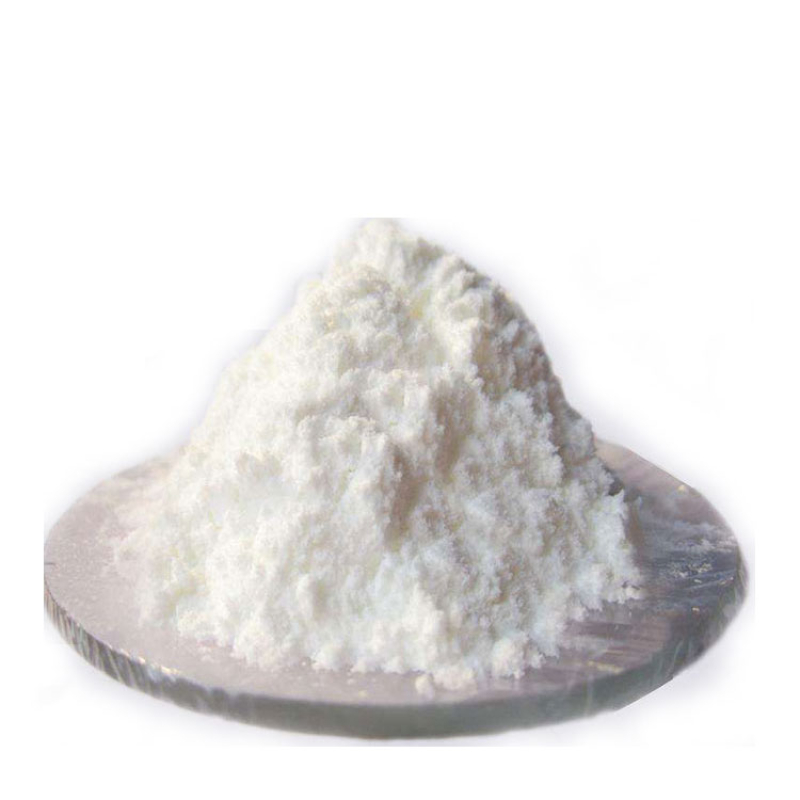Products Description of Silica gelCAS#112926-00-8Silicone gel is a type of low cross-link density silicone rubber without fillers. Silicone gel is different from ordinary silicone rubber elastomers. It has a transparent or translucent gel appearance, very low mechanical strength, and its hardness is difficult to measure. Its physical strength is generally characterized by needle penetration.
Contact Now
Products Description of Triethylamine CAS#121-44-8 Triethylamine (molecular formula: C6H15N), also known as N,N-diethylethylamine, is the simplest homotrisubstituted tertiary amine. It has the typical properties of tertiary amines, including salt formation and oxidation. Triethylamine has no reaction in the Hisberg reaction. It is a colorless to light yellow transparent liquid with a strong ammonia odor and a slight smoke in the air. Boiling point: 89.5℃, relative density (water = 1): 0.70, relative density (air = 1): 3.48, slightly soluble in water, soluble in ethanol and ether.
Contact Now
Products Description of 3-Methoxythiophene CAS#17573-92-13-Methoxythiophene is an important intermediate in organic synthesis.3-Methoxythiophene Chemical PropertiesMelting point 49-50 °C(Solv: ethyl ether (60-29-7); ligroine (8032-32-4))Boiling point 80-82 °C/65 mmHg (lit.)density 1.143 g/mL at 25 °C (lit.)refractive index n20/D 1.532(lit.)Fp 121 °Fstorage temp. Keep in dark place,Inert atmosphere,2-8°Cform Liquidcolor Clear light brownSensitive Air SensitiveBRN 106404LogP1.810 (est)CAS DataBase Reference17573-92-1(CAS DataB
Contact Now
Products Description of Direct Pigment Yellow 3 CAS#6486-23-3The pigment is a greenish light yellow powder with bright color. It can be dissolved in organic solvents such as ethanol and acetone when heated. It turns yellow when it meets concentrated sulfuric acid. The color remains unchanged in concentrated nitric acid, concentrated hydrochloric acid and dilute sodium hydroxide. It has good light resistance and heat resistance.
Contact Now
Products Description of Direct Red 23 CAS#3441-14-3 Purple-red powder. Moderately water-soluble, bright red when dissolved in water, its aqueous solution turns light blue when adding dilute sulfuric acid, produces wine-red precipitate when adding concentrated hydrochloric acid, and turns reddish orange-brown when adding concentrated alkali. Slightly soluble in ethanol and orange, insoluble in acetone.
Contact Now
Products Description of Phthalonitrile CAS#91-15-6Aromatic nitrile compounds such as phthalonitrile are very important organic synthesis intermediates, which are widely used in medicines, pesticides, herbicides, insecticides, dyes, fragrances and natural products.
Contact Now
Products Description of 2-Chloro-6-aminopyrazine CAS#33332-28-42-Amino-6-chloropyrazine is a chemical.CAS No.
Contact Now
Products Description of Glyphosate CAS#1071-83-6Glyphosate is an organophosphorus herbicide, a highly effective, low-toxic, broad-spectrum herbicide with systemic conduction. This product dissolves the wax layer on the surface of the leaves, branches and stems of weeds, and the drug effect quickly enters the plant conduction system to produce effects, causing the weeds to wither and die. It can effectively control annual and biennial grasses, sedges and broad-leaved weeds, and has a good control effect on perennial weeds with bad habits such as thatch, cyperus and bermudagrass.
Contact Now
Products Description of Sodium Oleate CAS#143-19-1Sodium oleate, also known as sodium octadecenoate, cis-9-octadecenol, oleyl alcohol, cis-9-octadecenol, (Z)-octadecene-9-enol, olive oil alcohol, cis -9-Octadecen-1-ol, 9-n-octadecenol, octadecenol. It is an organic oil with the chemical formula C17H33CO2Na. Sodium acid acid is the main component of soaps made from olive oil and other soaps. It is also the main component of tallow soap. It can also be produced by the reaction of sodium hydroxide and oleic acid. It is a compound composed of hydrophobic and hydrophilic groups.
Contact Now
Products Description of Sodium Oleate CAS#143-19-1Sodium oleate, also known as sodium octadecenoate, cis-9-octadecenol, oleyl alcohol, cis-9-octadecenol, (Z)-octadecenol, olive oil alcohol, cis-9-octadecen-1-ol, 9-n-octadecenol, octadecenol. It is an organic oil with the chemical formula C17H33CO2Na. Sodium oleate is the main component of soap made from olive oil and tallow soap. It can also be made by reacting sodium hydroxide with oleic acid. It is a compound composed of a hydrophobic group and a hydrophilic group.
Contact Now
Products Description of Sodium cyanoborohydride CAS#25895-60-7Sodium cyanoborohydride is a chemical substance, a white or slightly yellow solid powder, and a mild reducing agent.Sodium cyanoborohydride Chemical PropertiesMelting point >242 °C (dec.) (lit.)Boiling point 307°Cdensity 1.083 g/mL at 25 °CFp −1 °Fstorage temp. Store below +30°C.solubility Soluble in water (100 mg/ml, with heating), methanol, ethanol, and THF.
Contact Now
Products Description of Sodium dichloroisocyanurateCAS#2893-78-9White crystalline powder, with a strong chlorine smell, containing 60% to 64.5% effective chlorine. It is stable. When stored in hot and humid areas, the effective chlorine content only drops by about 1%. It is easily soluble in water, with a solubility of 25% (25°C). The solution is weakly acidic, and the pH of its 1% aqueous solution is 5.8 to 6.0. The pH changes little with increasing concentration.
Contact Now
Products Description of Sodium Perborate Monohydrate CAS#10332-33-9As a highly efficient and stable oxygen-based bleach, sodium perborate monohydrate is widely used in laundry detergents, color bleaching powders, and dishwashing agents.
Contact Now
Products Description of L-Arginine L-glutamate CAS#4320-30-3 White powder; Odorless or slightly odorous; with a special taste. Decomposes when heated to 193-194.6℃. 100ml. 25% aqueous solution contains 13.5g of arginine and 11.5g of glutamic acid.
Contact Now
Products Description of Sodium hexafluorophosphate CAS#21324-39-0Sodium hexafluorophosphate is also called "sodium hexafluorophosphate (V) acid". Chemical formula NaPF6·H2O. Molecular weight 185.97. White powder. Sensitive to air and carbon dioxide, relative density 2.36919. Very soluble in water. Decomposes at high temperature.
Contact Now
Sodium formate CAS#141-53-7The main purpose of sodium formate as follows:Sodium formate can be used as chemical analysis reagent, used for determination of arsenic and phosphorus, also used as a disinfectant, mordant and so on.
Contact Now
Products Description of Sodium amide CAS#7782-92-5Sodium amide, also known as sodium amide or sodium ammonia, is a white or olive green crystalline powder with an ammonia smell. Its chemical formula is NaNH2, its molecular weight is 39.01, its melting point is 210℃, and its boiling point is 400℃. It decomposes into sodium, nitrogen and hydrogen when heated to 500-600℃. It reacts violently with water to form sodium hydroxide and release ammonia gas. It is slightly soluble in liquid ammonia and reacts slowly with alcohol.
Contact Now
Products Description of Sodium lauroylsarcosinateCAS#137-16-6Sodium lauroyl sarcosinate, also known as sodium lauroyl-N-methylaminoacetate and sodium lauroyl-N-methylglycinate. The main functions of sodium lauroyl sarcosinate in cosmetics and skin care products are antistatic, foaming agent, detergent, and surfactant. The risk factor is 3, which is relatively safe and can be used with confidence. It generally has no effect on pregnant women. Sodium lauroyl sarcosinate is not acne-causing.
Contact Now
Products Description of Sodium allylsulfonate CAS#2495-39-8Sodium allylsulfonate, the molecular formula is C3H5SO3Na, and the molecular weight is 144.1.Sodium allylsulfonate Chemical PropertiesMelting point 242 °C (decomp)density 1.206vapor pressure 0Pa at 25℃storage temp. Inert atmosphere,Room Temperaturesolubility soluble in Alcohol, Dimethylformamideform PowderSpecific Gravity1.25color WhiteWater Solubility 4 g/100 mLHydrolytic Sensitivity0: forms stable aqueous solutionsStability:Stable.
Contact Now
Products Description of Sodium MethoxideCAS#124-41-4Sodium methoxide is also called sodium methoxide. It is a kind of alcohol salt generated by methanol, with the chemical formula CH3ONa. It is a strong base commonly used in organic synthesis. Sodium methoxide is usually stored as a solution in alcohol solvents such as methanol and ethanol. It dissolves in ether to form a suspension, is sensitive to moisture, and decomposes into methanol and sodium hydroxide when it comes into contact with water: CH3ONa+H2O→CH3OH+NaOH. Sodium methoxide products come in two forms: solid and liquid.
Contact Now
Products Description of Sodium Hydroxymethanesulphinate CAS#149-44-0Sodium bisulfite formaldehyde is translucent white orthorhombic crystals or small pieces. Apparent density 1.80~1.85g/cm3. Easily soluble in water, slightly soluble in alcohol. It has extremely strong reducing properties under high temperature and can make the dyed color disappear, so it is known as the chemical book of hanging white blocks. It decomposes when exposed to acid, and decomposes at 120°C to produce toxic gases such as formaldehyde and hydrogen sulfide.
Contact Now
Products Description of Sodium hydroxide CAS#1310-73-2Sodium hydroxide, also known as caustic soda and caustic soda, has the chemical formula NaOH. It is a highly corrosive strong base, usually in white flakes or granules. It can be mixed with water to form an alkaline solution, and can also be dissolved in methanol and ethanol. This alkaline substance is deliquescent and will absorb water vapor in the air, as well as acidic gases such as carbon dioxide. Sodium hydroxide is one of the commonly used chemicals.
Contact Now
Products Description of Sodium Hydroxide CAS#1310-73-2Sodium hydroxide, also known as caustic soda and caustic soda, has the chemical formula NaOH. It is a highly corrosive strong base, usually in white flakes or granules. It can be mixed with water to form an alkaline solution, and can also be dissolved in methanol and ethanol. This alkaline substance is deliquescent and will absorb water vapor in the air, as well as acidic gases such as carbon dioxide. Sodium hydroxide is one of the commonly used chemicals.
Contact Now
Products Description of Ferric ammonium oxalate trihydrate CAS#13268-42-3Calcium and magnesium precipitants, electroplating industryFerric ammonium oxalate trihydrate Chemical PropertiesMelting point 161°C (rough estimate)density 1,78 g/cm3solubility very soluble in H2O; insoluble in ethanolform Crystalline Powdercolor GreenWater Solubility Very soluble in water. Insoluble in alcoholSensitive Light Sensitive & HygroscopicMerck 14,517Exposure limitsACGIH: TWA 1 mg/m3NIOSH: TWA 1 mg/m3Stability:May decompose upon exposure to light.
Contact Now
































